The beauty of McWay Falls is unquestioned and thousands and thousands of people make their way to Julia Pfeiffer Park every year to gaze upon the beach and little stream of water that falls onto the sand. And, if you’re not able to make it to California, you can watch three hours of the beach and waterfall on video on YouTube. It’s a well-photographed/videoed site!
Now that we’ve got that out of the way… the area has a history as well… and for the record, the beach wasn’t always there. The sand came in the 1980s after a nasty storm that was followed by a landslide. Before that, the waterfall dropped into the ocean water below.
The land has a connection to New York; it originally belonged to homesteader Christopher McWay but was purchased by Lathrop Brown in the 1920s. At that time, Brown was the New York State Representative in Congress and also a former roommate and close friend of Franklin D. Roosevelt.
Lathrop Brown seemed to be one of those people who was a part of New York’s inner circle of elite and accomplished people. His own parents were Charles Stelle Brown, a Manhattan real estate magnate (Brown Harris Stevens LLC), and Lucy Nevins Barnes, the world’s first U.S. Women’s Amateur Golf Champion in 1895. Brown’s sister, Lucy married painter William L’Engle and was an extremely accomplished painter in her own right.
Lathrop Brown married New York heiress Helen Hooper, who is described by historical sources as being an “extremely independent” woman. She was orphaned at the age of 15, inherited 10-million dollars, promptly hired herself a governess, and travelled to Europe to complete her education.
Once married, the couple purchased property around the world including a large tract on Long Island dubbed the “Land of Clover,” on which the couple built a Colonial Revival-style mansion designed by Brown’s own brother, Archibald.
As mentioned above, the couple purchased McWay’s Saddle Rock Ranch in the 1920s. It wasn’t until 1940 that they built a house on the land; a residence with no roads that would allow them to get away from the world. According to witnesses, the house had a black marble staircase and large plate-glass windows from which the couple to view the seaside below.
They didn’t live in the house for very long, in 1956 they left to live on a ranch in Florida, likely because Helen suffered from arthritis and the foggy coastal weather made it worse. Attempts to build a house further inland and away from the fog (dubbed the Tin House) failed to help.
In 1961 Helen Hooper Brown donated the entire 1,800-acre property to the State of California with a number of stipulations. It needed to remain untouched and without manmade structures. It also needed to be named Julia Pfeiffer Burns Park in honour of her dear friend, one of the first homesteaders to the area. Brown’s house was to be used for “Public Purposes” and if the state was unable to use the house after five years, it was too be removed. This is what happened. In 1966, the house was removed. The foundation and steps leading to the structure can still be seen at the Waterfall viewing area.
Here’s a tip for anyone visiting the site. Most people get as far as the waterfall, take a few snaps on their iPhone, and are whisked away to the next scene/site. However, if you walk all the way to the Waterfall House, the view along the other side of the coast is just as magnificent.
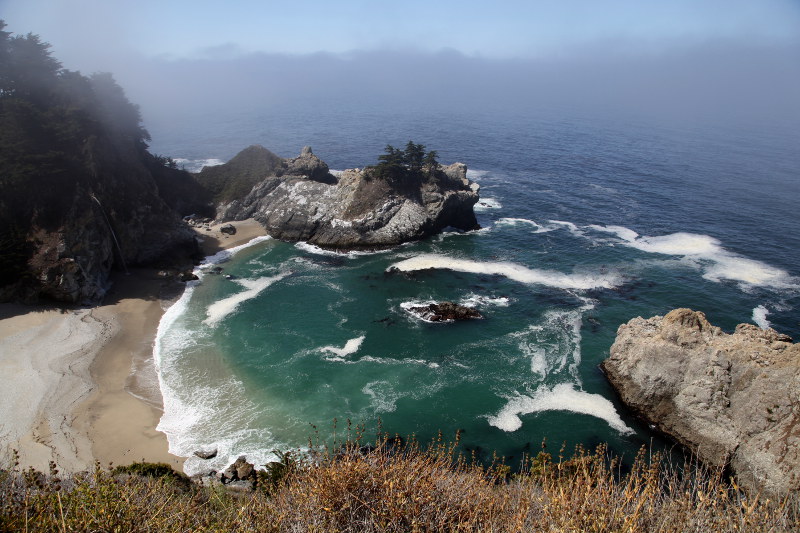
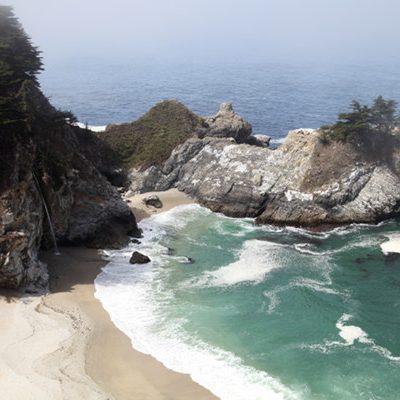
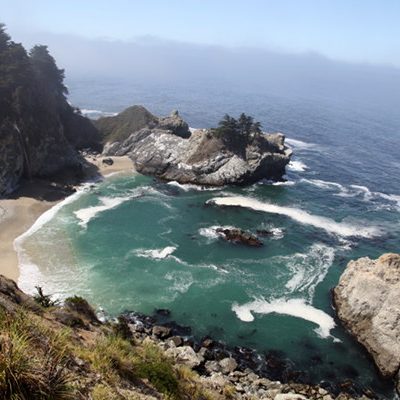
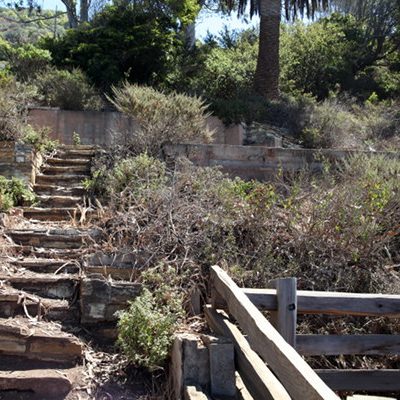
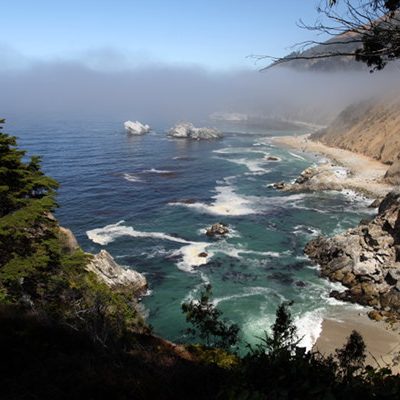
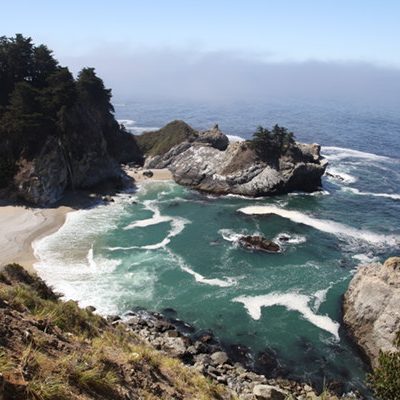
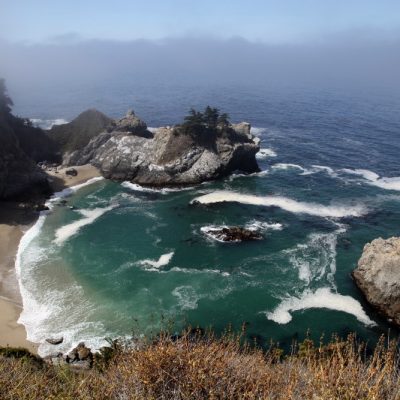
0 comments on “McWay Falls”Add yours →